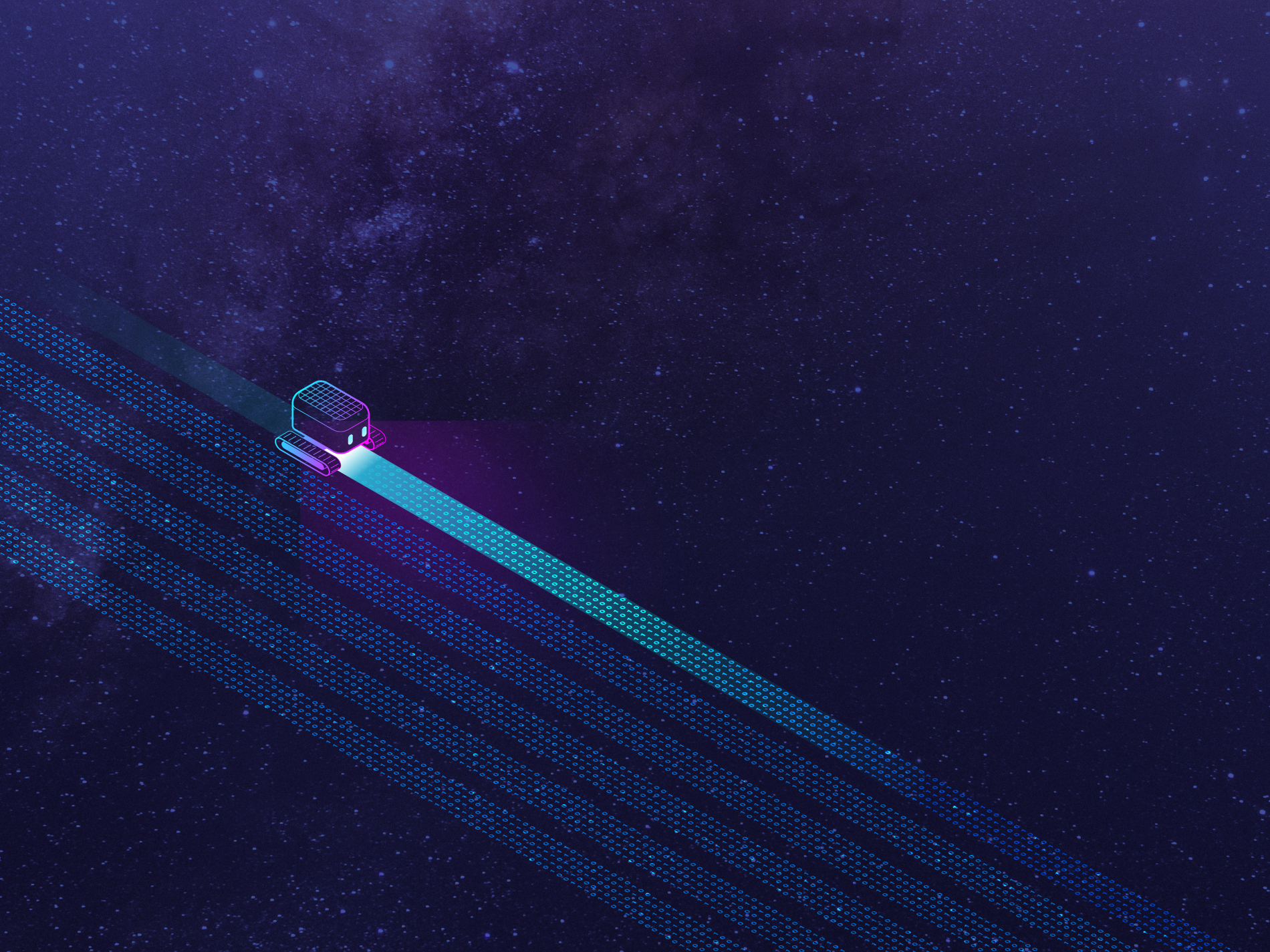Machine learning and artificial intelligence are already causing significant disruptions. Their practical applications are addressing some of society's most pressing challenges. Take medicine, for instance: early detection, diagnosis, decision-making, and preventative measures are paving the way for innovation in health tech. Whether it's climate change or a rare disease, deep learning and AI provide clear benefits. However, what are the associated risks? And who controls these solutions?
In the history of technological evolution, few innovations have promised as profound an impact as Machine Learning and Artificial Intelligence (AI). These technologies, once the stuff of science fiction, are now tangible realities, reshaping industries and redefining the boundaries of human creativity. AI is not just a buzzword—it's a massive disruption force poised to redefine our world.
Consider the rapid advancements in autonomous vehicles, where AI-driven cars promise to revolutionize transportation. In healthcare, AI algorithms are already assisting doctors in diagnosing diseases with unprecedented speed and accuracy. Even the finance sector is not untouched, with AI-driven bots making investment decisions, sometimes outperforming human experts.
As the discourse transitions from mere buzzwords to tangible implementations, where are the genuine innovations emerging, and what implications do they hold for our future?
AI in Healthcare: A New Era of Medical Innovation
Healthcare, a sector consistently embracing technological advancements, is on the brink of a transformative revolution. Machine learning technologies are reshaping the medical landscape with innovative solutions and show signs of hope for easing the strain on an already overburdened system. These advancements promise to elevate patient care to unprecedented levels.
At the heart of AI's transformative power in healthcare is its unparalleled ability to analyze vast and complex data sets. This capability is leading to groundbreaking advancements in various medical domains. One of the most promising areas is early disease detection. Traditional diagnostic methods often rely on showing noticeable symptoms before a disease can be diagnosed. However, AI can detect diseases, such as cancers, at their nascent stages, sometimes even before any significant symptoms appear. This early detection can drastically improve prognosis and be the difference between life and death for many patients.
Medical imaging is another area where AI is making significant inroads. While effective, traditional diagnostic imaging often depends on radiologists' expertise and experience to interpret results. With the integration of AI, the process of diagnostics has been expedited. Advanced AI algorithms can now assist radiologists by highlighting areas of concern in medical images, ensuring that even the minutest anomaly doesn't go unnoticed. This provides timely and accurate care and reduces the chances of misdiagnosis. This concern has long plagued the medical community.
Mental health, often misunderstood and overshadowed by its physical counterpart, is also experiencing the transformative touch of AI. AI-driven mental health applications are now adept at recognizing nuanced behavioral patterns and emotional shifts in users. By analyzing data such as text inputs, voice modulations, and facial expressions, these apps can provide support during emotional downturns or even suggest professional intervention when deemed necessary. This proactive approach holds the potential to avert severe mental health crises. Furthermore, considering that over 20% of adults aged 60 and over suffer from a mental or neurological disorder, AI could also serve as a viable 'companion' to alleviate feelings of loneliness, which is a significant negative driver of mental health, especially among the elderly.
The realm of drug discovery, traditionally a long and arduous process, is being revolutionized by AI. In the past, researchers would spend years, sometimes even decades, sifting through molecular databases, conducting trials, and often facing numerous setbacks before a viable drug candidate was identified. With AI, this process is being streamlined. Advanced algorithms can now sift through vast molecular databases at speeds unimaginable to human researchers. They can predict how different molecules interact, identify potential drug candidates, and even forecast their efficacy and safety profiles. This accelerates the drug discovery timeline and makes it significantly more cost-effective.
Moreover, AI's role in personalized medicine must be recognized. Every individual's genetic makeup is unique, and AI is paving the way for treatments tailored to these individual genetic profiles. By analyzing a patient's genetic data, AI can predict how they will respond to specific therapies, ensuring they receive the most effective care tailored to them.

AI and Transportation: Navigating a Safer and More Efficient Future
The transportation sector, a cornerstone of modern civilization, is undergoing a profound transformation. As we stand at the crossroads of this new era, pioneering companies like GATIK and XWING are leading the charge, showcasing the potential of AI in reshaping the way we move.
GATIK's introduction of autonomous trucks for retail giants like Walmart signifies more than a technological marvel; it represents a paradigm shift in logistics and supply chain management. On the other hand, XWING is venturing into the skies, pioneering the realm of autonomous cargo flights, which could redefine air transport as we know it.
One of the most promising prospects of integrating AI into transportation is the potential to reduce road accidents drastically. While effective, traditional vehicles rely on human judgment, which is prone to errors due to fatigue, distractions, and sometimes impaired judgment. AI-driven cars equipped with sensors and cameras process vast amounts of data in real-time. This allows them to make split-second decisions, effectively navigating around potential hazards. The result? Enhanced safety for the vehicle's occupants, pedestrians, cyclists, and other road users.
The influence of AI extends beyond individual vehicles. AI-driven traffic management systems are poised to transform urban commuting. By analyzing traffic patterns, predicting congestion points, and dynamically adjusting traffic signals, these systems aim to reduce the common urban issue of traffic jams. The future holds the potential for quicker and more consistent commutes, reducing the unpredictability that often affects our travels. Companies such as Skyway are pioneering autonomous navigational traffic management solutions for safer, more reliable, and efficient skies.
Public transportation, often the backbone of urban mobility, is poised to benefit immensely from AI. By leveraging AI for intelligent scheduling and route optimization, buses and trains can operate more punctually, ensuring commuters reach their destinations on time. Furthermore, integrating AI-driven predictive maintenance means potential equipment failures can be identified and rectified well in advance, minimizing service disruptions and ensuring consistent service quality.
The aviation sector, too, is soaring to new heights with AI. Airlines can achieve significant fuel savings by optimizing flight paths based on real-time data, reducing operational costs, and lowering carbon emissions. Furthermore, airports with AI-driven security systems can streamline security checks, ensuring passenger safety without the often frustrating delays.
Venturing beyond land and air, the maritime industry is also charting a course toward an AI-driven future. The vision of autonomous ships, guided by sophisticated AI algorithms, promises to make naval transport more efficient and safer. By optimizing routes based on weather conditions and maritime traffic, these ships can achieve fuel efficiency and reduce the risk of accidents.
AI Meets Creativity: A New Renaissance of Ideas
In the realm of human creativity, AI-driven art and design are making a significant impact. This blend of technology and art is ushering in an era where creative boundaries are expanded, and the very nature of creativity is evolving.
At Play&Co, the prevailing view is that, for the foreseeable future, humans will remain the primary creators. While AI lacks subjective opinions and independent thought, it's poised to become a powerful tool for creators. It will act as a catalyst, easing the cognitive burden of producing creative content. This shift has some designers on edge, especially those who've built their careers on specialized creative production. They fear becoming obsolete in the face of AI's capabilities.
Historically, technology and creativity were seen as separate realms. But today, AI is proving to be a valuable partner in the creative journey. Its impact can be felt in music, visual arts, and more. Platforms like Midjourney, Dall-E, and ChatGPT showcase this collaboration. They highlight the seamless integration of AI's analytical capabilities with human artistic flair, resulting in creations that redefine traditional notions of art.
The literary world, traditionally reliant on the nuanced touch of human authors, is also undergoing a transformation. While it's undeniable that human authors infuse their works with emotion, depth, and a unique perspective, AI brings a different (and some might say, complementary) set of strengths to the table. With its ability to process vast amounts of data, AI can craft intricate plots, weave diverse characters, and emulate various writing styles. The result is a rich narrative tapestry that is both complex and captivating. While still in their infancy, AI-authored works hint at a future where human and machine collaboration can produce literature that resonates on multiple levels.
In the realm of film and television, AI's impact is multifaceted. On one hand, scriptwriting, a process that demands both creativity and consistency, stands to benefit immensely from AI. Advanced algorithms can analyze scripts for plot consistency, character arc development, and thematic depth. This ensures that narratives are compelling and devoid of glaring inconsistencies when used in tandem with a human author. Furthermore, AI-driven tools are revolutionizing the world of animation. Scenes once deemed too intricate or prohibitively expensive to produce can now be brought to life with stunning realism. This democratizes the animation process, allowing more creators to realize their visions and pushing the boundaries of what's possible in visual storytelling.
On the other hand, it's essential to consider the human element in the industry. The 2023 Writers Guild of America strike highlights the concerns and challenges writers face in the age of technological advancements. Many writers felt their creative contributions were undervalued and overshadowed by the increasing reliance on AI and other technologies. This underscores the importance of balancing technological innovation with recognizing and appreciating human creativity and expertise.
AI's role in music production is undeniably transformative. From composing original scores to emulating the styles of iconic musicians, AI music tools are pushing the boundaries of auditory creativity. Musicians can collaborate with AI to explore new soundscapes, experiment with genres, and even craft personalized music experiences for listeners. However, the rise of AI in music is not without its challenges. The recent controversy surrounding the Deep Fake Drake song, as highlighted by The New York Times, underscores the ethical and legal dilemmas posed by AI-generated music. Questions about authenticity, copyright infringement, and the potential misuse of an artist's voice without their consent are becoming increasingly prevalent. As AI continues to shape the music industry, it's crucial for artists, producers, and listeners alike to be aware of these issues and navigate them responsibly.
The AI revolution is here, reshaping our world in ways we're only beginning to understand. While the opportunities are boundless, they come with challenges that society must address. As we stand on the cusp of this new era, engaging in informed discussions is imperative, ensuring that AI's future is innovative and inclusive. The fusion of human intuition and AI promises a lot filled with unprecedented creativity and innovation. Still, it's essential to approach AI enthusiastically and cautiously, ensuring a future that benefits humanity.
Learn more about designing empathetic digital experiences in the modern workplace in our latest Insight Report — Business As Usual.





